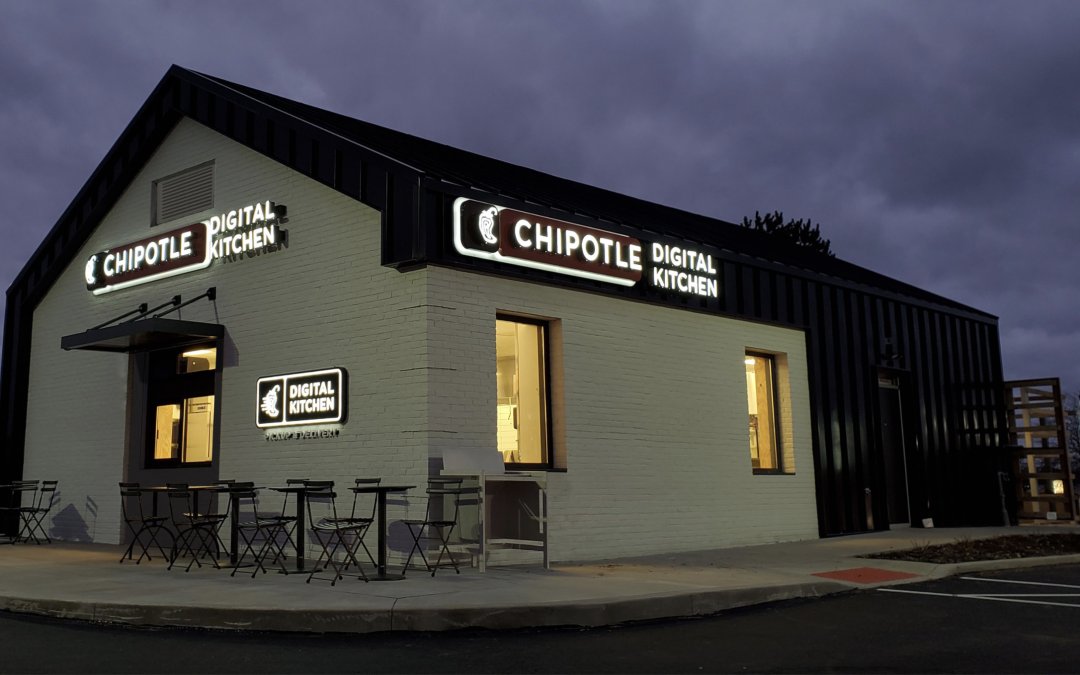When COVID-19 hit, it was clear that things in the restaurant industry were going to change. Many of those changes, such as the rise of delivery, were obvious. But other changes and their knock-on effects would have been harder to predict.
“I never thought I’d see the day when I’d see a Chili’s in Manhattan,” said Wyman Roberts, president and CEO of Brinker International, on a recent earnings call “but it’s been up and running for a month, and we’re encouraged by its early performance.”
Brinker International is the parent company of Chili’s and Maggiano’s Little Italy, both casual dining restaurants.
The first of Brinker’s so-called “urban kitchens,” the New York City restaurant is a ghost kitchen, serving food from Chili’s and virtual brand It’s Just Wings. The company has two more urban kitchens planned, said CFO Joe Taylor, one in Columbus, Ohio and another in Dallas.
Cracker Barrel is also using ghost kitchens. The company unveiled its first multi-brand, delivery-only location, Cracker Barrel Kitchen, in Los Angeles late last year. The restaurant serves food from Cracker Barrel and its two virtual brands: Pancake House and Chicken ‘n Biscuits. It’s also the company’s first location in Los Angeles.
“We plan to open additional ghost kitchen locations in Los Angeles in the near future,” said Sandra Cochran, CEO of Cracker Barrel. “We’re excited about the potential to bring the homestyle food of Cracker Barrel into additional urban areas.”
Ghost kitchens are well suited to urban markets. Fed primarily by digital traffic—often from third-party aggregators—they eliminate the need to place restaurants in highly visible and expensive locations. They also eliminate the need for dining rooms, further reducing real estate costs. Absent ghost kitchens, it’s hard to imagine that casual dining stalwarts like Chili’s and Cracker Barrel would see NYC and Los Angeles as promising development areas.
The rise of off-premises dining has inspired Chipotle to move in the opposite direction. The addition of a drive-thru, or “Chipotlane,” is helping the company find success outside of urban centers. “With the extra convenience channel at Chipotlane, it just makes it more doable from a financial standpoint and a convenience standpoint to go into these small towns,” said Chief Financial Officer John Hartung on the company’s fourth-quarter earnings call.
Dropping one restaurant into a remote location is hard to maintain, so to make the strategy work, Chipotle plans to get into small towns in a big way. Hartung laid out a strategy of putting the small-town restaurants in sequence “where there’s one that’s 50 miles away and another that’s 50 miles away,” to ensure the locations are accessible and the company can “keep an eye on” the new restaurants.
“Small town” isn’t as small as you’d expect. “we’re not talking about 5,000, 10,000—we’re talking about like 40,000 plus,” said CEO Brian Niccol. The company’s previous small-town targeted concepts baked lower sales volume into the investment calculus. With the addition of Chipotlanes, there’s “no tradeoff in volume,” Niccol said.
The rise of off-premises dining is also making it easier for brands to expand faster, particularly with companies such as Reef, which have capitalized on that shift to open huge numbers of small delivery-focused kitchens.
On a recent earnings call, Wendy’s CEO Todd Penegor said the company expects “to open about 150 to 200 Reef kitchens across the globe” in 2022. According to research for the Franchise Times Top 400, Wendy’s has, on average, net gained less than 80 restaurants per year over the past five years.
Wendy’s Chief Financial Officer Gunther Plosch estimated that “roughly half of [Wendy’s] new unit growth will come from non-traditional delivery locations.” Like many brands, it sees delivery as an entry point to major cities. “We continue to expect Reef delivery kitchens to help us address underpenetrated urban markets,” said Penegor.


